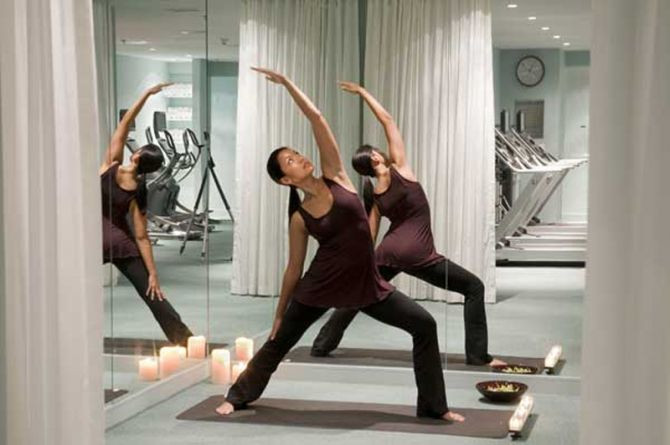Scientists Prove that Exercise Can Trigger Female Orgasms

Sex may not be the only way for a woman to achieve orgasm, according to researchers who claim that they have confirmed anecdotal evidence of women who experience orgasm while exercising.
"Coregasm" is a phenomenon that is associated with abdominal exercise that has been circulating the media for years researcher Debby Herbenick and co-director of the Center for Sexual Health Promotion in IU's School of Health said in a statement, but the new findings suggest that orgasm is not necessarily associated only with sexual events.
"The most common exercises associated with exercise-induced orgasm were abdominal exercises, climbing poles or ropes, biking/spinning and weight lifting," Herbenick said. "These data are interesting because they suggest that orgasm is not necessarily a sexual event, and they may also teach us more about the bodily processes underlying women's experiences of orgasm."
Researchers said that they administered online surveys to 124 women who reported experiencing exercise-induced orgasms (EIO) and 246 women who experienced exercise-induced sexual pleasure (EISP), between 18 to 63 years old who were in a relationship or married.
Researchers said that about 40 percent of women, who had felt exercise-induced orgasms or exercise-induced sexual pleasure, experienced it more than 10 times on different occasions. Most of the women experiencing exercise-induced reported some degree of self-consciousness when exercising in public places, but a fifth reported that they could not control their experience.
Most of the women reporting that they had exercise-induced orgasms said that they were not fantasizing or thinking about anyone they were attracted to during their experiences, instead 51.4 percent reported experiencing an orgasm associated with abdominal exercises, 26.5 percent experienced an orgasm while lifting weights, 20 percent while doing yoga, 15.8 percent with bicycling, 13.2 percent with running and 9.6 percent while walking or hiking.
Researchers still cannot explain the mechanisms behind exercise-induced orgasm and exercise-induced sexual pleasure, and they hope that future research will provide more understanding about the triggers for both, and whether such exercises can improve women’s sexual experiences.
“It may be that exercise — which is already known to have significant benefits to health and well-being — has the potential to enhance women’s sexual lives as well,” she said in a university statement.
The study did not determine how prevalent "coregasms" or exercise-induced orgasm and exercise-induced sexual pleasure are among women, but researchers suggested that the phenomenon is not rare because it took only five weeks to recruit the 370 women who have had EIO or EISP.
"Magazines and blogs have long highlighted cases of what they sometimes call 'coregasms,'" Herbenick said. "But aside from early reports by Kinsey and colleagues, this is an area of women's sexual health research that has been largely ignored over the past six decades."
Published by Medicaldaily.com



























